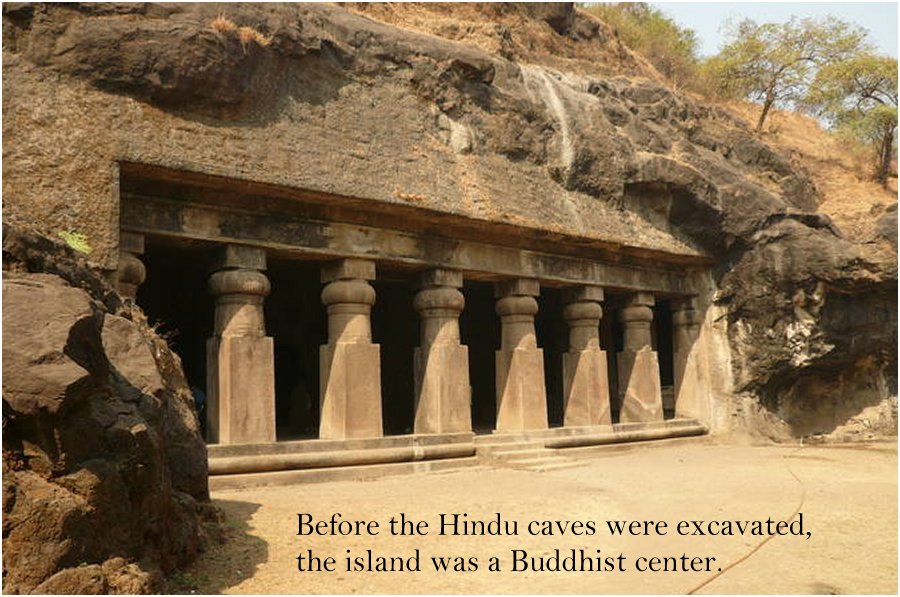MessageToEagle.com – The Elephanta Caves, which are believed to be dated to about the 7th century, represent a complex of ancient cave temples on Elephanta Island, located 10 km away from the Gateway of India at Mumbai.
The complex consists of two groups of caves—the first is a large group of five Hindu caves with rock cut stone sculptures, and the second, a smaller group of two Buddhist caves.
The place – still worshipped by the locals – is dedicated to Lord Shiva.
The island, which covers an area of approximately 7 km, was originally called Gharapuri (literally “the city of caves”); later, the Portuguese renamed the island, after they found a colossal stone elephant near their landing place.
Elephanta Island came under the dominions of at least half a dozen of different powers that ruled this region from 400 BC to the modern times.
Before the Hindu caves were excavated, the island was a Buddhist center. The remains of the Buddhists Stupas in Elephanta probably date to the early phase of Buddhism dating 2nd century BC.
The Buddhists, who were the first to carve temples from mountains, were followed by the Hindu. Every Hindu temple primarily worships one Hindu god, and the Elephanta Caves were for worshipping the god Shiva.
The statues carved on the walls of the Elephanta Caves are huge (about 20 feet high). They were elaborate, centering on a scene in Shiva’s life, featuring Shiva as well as his wife and other important personalities.
There are many theories regarding the beginnings of the Elephanta Caves. Most of them propose that they were built during the period 450 to 750 AD.
See also:
Ajanta Caves: Incredible Accomplishment Of India’s Ancient Stonecutters
Yungang Grottoes: Marvellous Example Of Ancient Buddhist Rock-Cut Architecture
Gigantic Kailasa Temple Emerging From A Mountainside: Engineering Marvel Of India’s Master Builders
More Fascinating Ancient Places And Civilizations
Interestingly, this period also marks the decline of Buddhism in India and the revival of the Brahmanical traditions (ancient Indian religious traditions that have their beginnings in the early Vedic religion), in the country.
The most impressive of all the caves, is the Cave 1, which represents the evolved Brahmanical rock-cut architecture and displays several amazing and lively sculptures.
The cave has a main entrance on the north with two other openings on the east and west respectively and a central hall with six rows (with six in each row) of pillared columns, six in each row except on the western corner, where a shrine contains a collection of rock art related to Shiva.
The temple dedicated to Lord Shiva, is declared as a UNESCO World Heritage Site.
Copyright © MessageToEagle.com All rights reserved. This material may not be published, broadcast, rewritten or redistributed in whole or part without the express written permission of MessageToEagle.com
Expand for references







